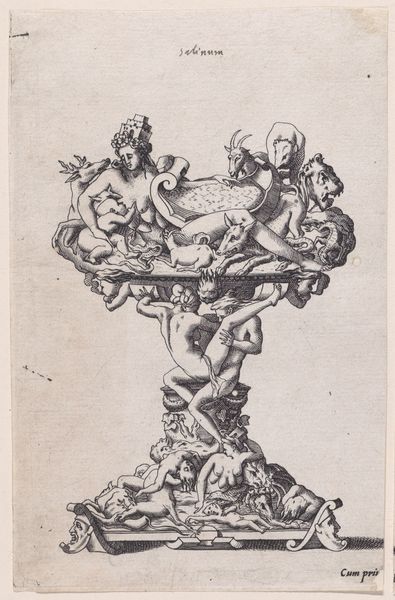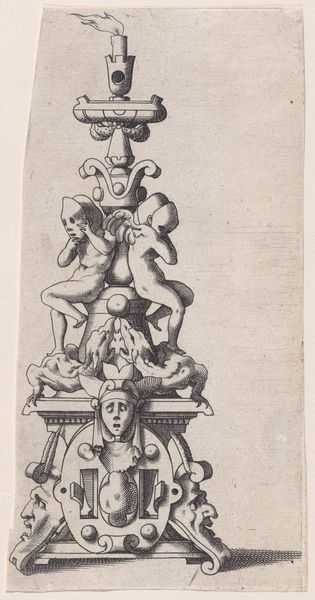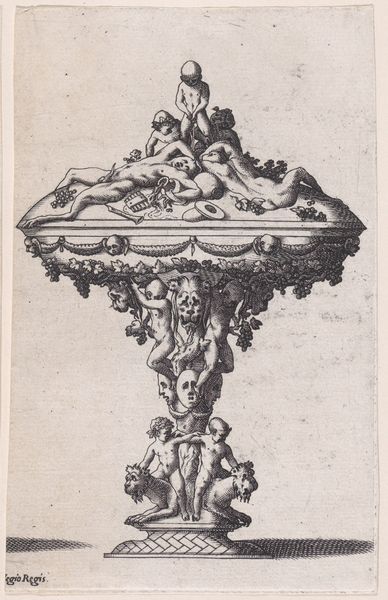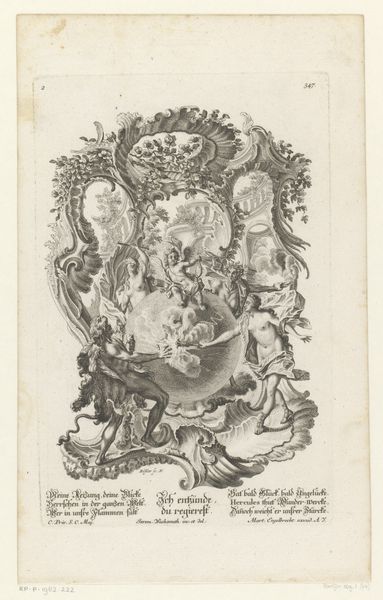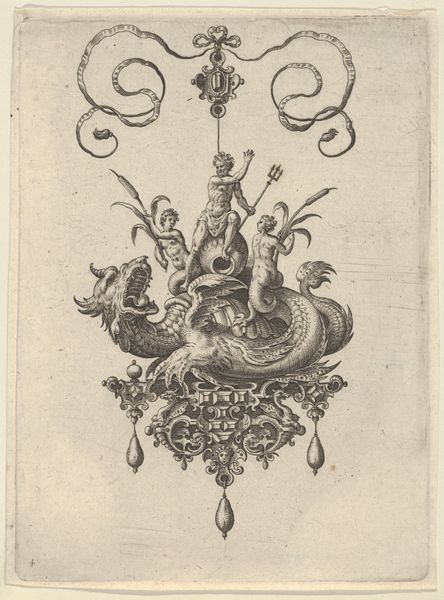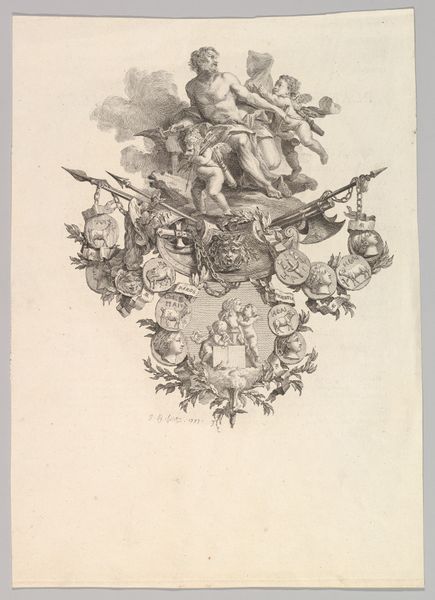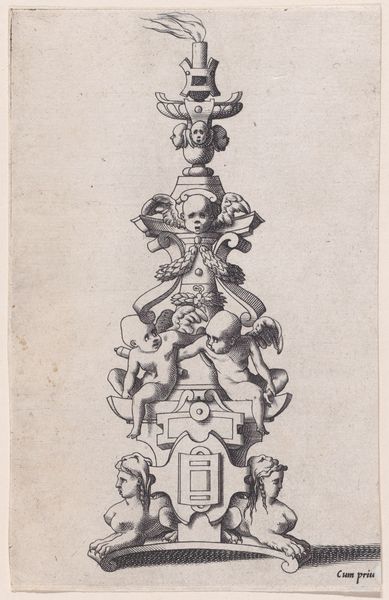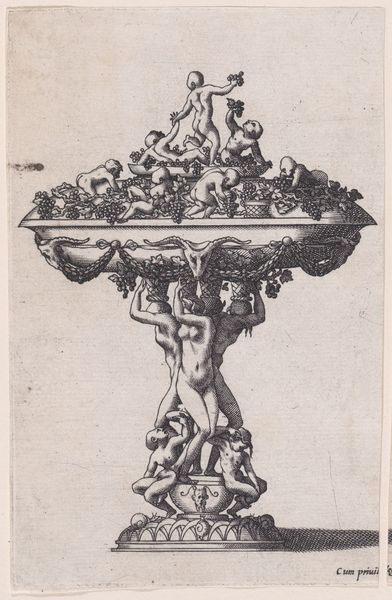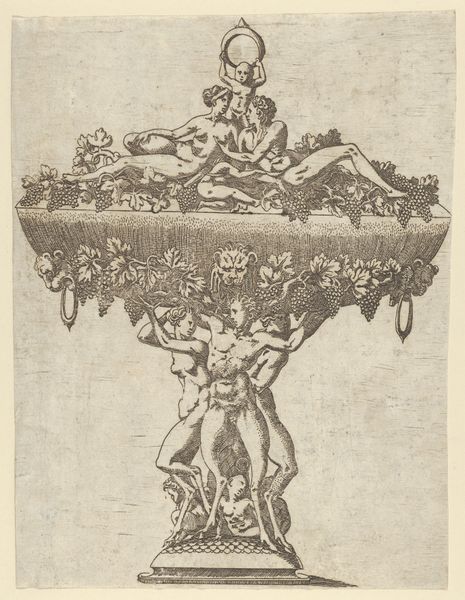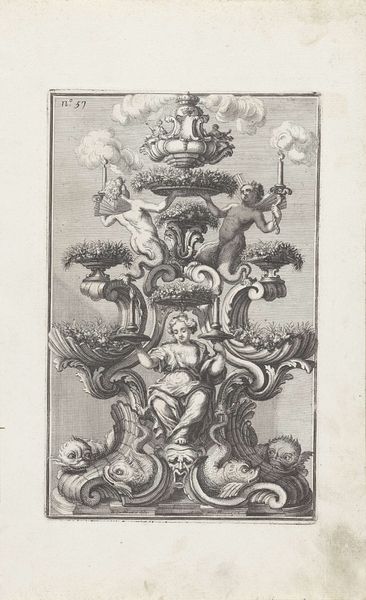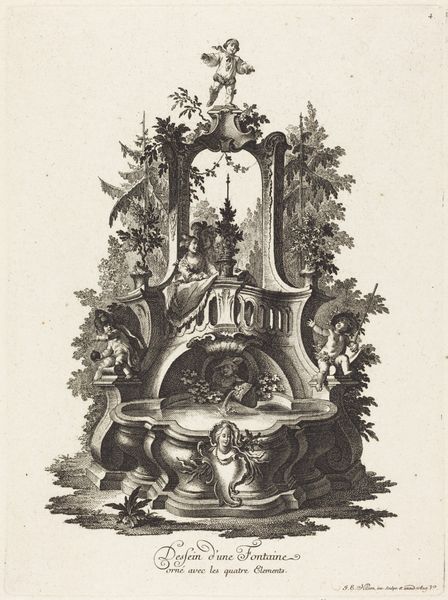
drawing, print, metal, engraving
#
drawing
#
allegory
# print
#
metal
#
mannerism
#
figuration
#
decorative-art
#
engraving
Dimensions: sheet: 5 5/8 x 3 9/16 in. (14.3 x 9.1 cm)
Copyright: Public Domain
René Boyvin made this engraving of a salt-cellar with Neptune in France during the second half of the 16th century. It presents a design for a luxury table object, reflecting the elaborate tastes of the French court. The image is packed with classical references, such as the god Neptune with his sea horses, cherubs, and sphinxes. These motifs create an aristocratic atmosphere, which is reinforced by the object's precious material: salt. Salt was not only a condiment but also a symbol of wealth. We can find similar designs in pattern books, which were used by craftsmen to produce luxury goods for elite consumers. The print itself functions as a kind of advertisement, promoting Boyvin's skills as a designer and engraver. It reflects the increasing importance of printmaking as a medium for disseminating new ideas and styles in early modern Europe. To understand this image better, we can consult archival sources, such as inventories of royal collections, treatises on table manners, and histories of French design. These sources can shed light on the social and cultural context in which Boyvin's print was produced and consumed.
Comments
No comments
Be the first to comment and join the conversation on the ultimate creative platform.
